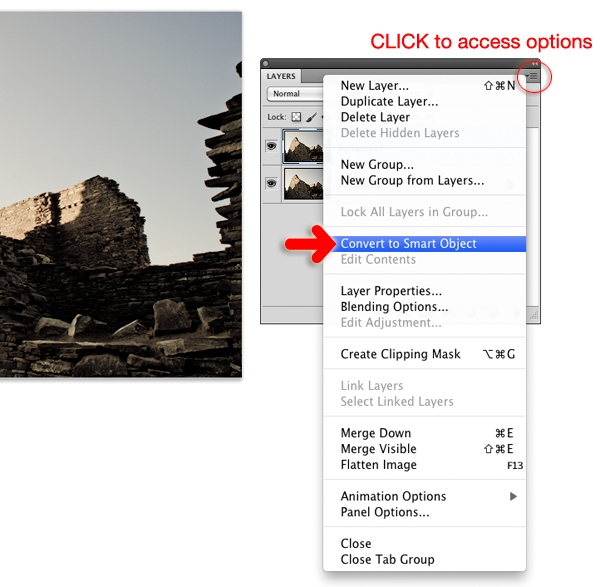 |
3) Now transform that copy into a Smart Object. The reason I do this is because the Nik Collection are not only stand-alone applications, they are plugin options Photoshop allows you to access from the “Filter” menu. By working on a Smart Object one transforms any filter used to affect it into a “Smart Filter”. Smart Filters are perpetually editable. This means that even after we close the file we’re working on and quit Photoshop; even after we restart our computers or shut them down altogether, re-accessing our image again at another time, the filters’ effects will be editable once again. 4) With that Smart Object layer selected I open one of the Nik creative filters to begin my work. Let’s say I decide upon a series of effects from within Color Efex Pro. When I’m satisfied with the results I click “OK” and the filter renders those effects on the layer. When I have completed my experimentation with whatever Nik effects I intend to apply I click ‘Save’ to commit this treatment to the layer. 5) Back in the Photoshop workspace you will find the Smart Object has been affected as intended. Because we worked on a copy of the original “Background” layer it is still untouched and available for additional use in the creative process as I illustrate in my related Youtube screencast. When I am happy with what I have in hand I will normally flatten the file and save it as a TIFF. Though we are able to save layers within a TIFF file I normally use this format for single-layer versions of a layered file saved as a native Photoshop document (or PSD). Consider reviewing this process illustrated and explained in more detail by this screencast. |